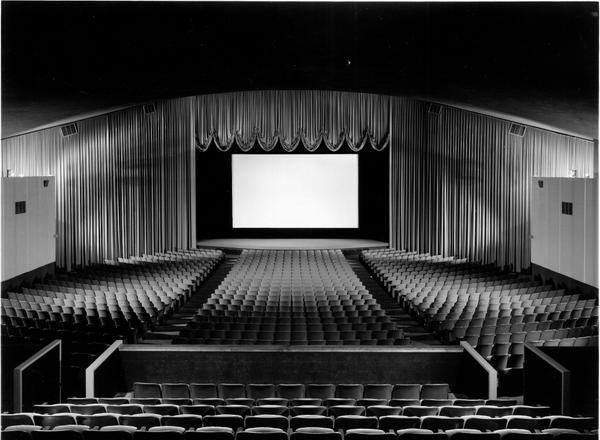 |
| The Hyperbolic Paraboloid Edens Theater in Northbrook, Illinois. |
Built in 1963 and opened with the movie, "Divorce Italian Style," the large Edens was inside a traditional movie theater with a giant screen, red curtains and a small stage area. The original color scheme was gold and off-white, with teak paneling. However, the Edens' exterior was a real stunner, like something from a 1950s sci-fi movie.
It was called the largest "hyperbolic paraboloid" building ever constructed when it opened.
The theater's concrete roof curved sharply upwards on either end, rising dramatically skyward at each point. Its corrugated concrete walls were broken up by long, undulating swaths of glass along the entrance areas. The sunken main lobby was reached by stairs and featured ultra-modern "living room" furniture and artwork.

On November 14, 1969, a slightly smaller, ordinary-looking second theater was built and opened adjacent to the original theater. The theaters were renamed the Edens I & II.

When Star Wars was released on Wednesday, May 25, 1977 half of the people waiting in line were disappointed that the movie was sold out and they were turned away. A friend and I waited over 2 hours that Saturday, the 27th, to get in to see Star Wars. We got in... and great seats, smack-dab in the middle of the theater too.
"The Life of a Beautiful Bird"
A 5-PART EDENS THEATER VIDEO
(1/5) Edens Theater [runtime 12:11]
(2/5) Edens Theater [runtime 11:06]
(3/5) Edens Theater [runtime 9:20]
(4/5) Edens Theater [runtime 14:15]
(5/5) Edens Theater [runtime 9:11]





